The deadliest chemical and biological weapons of antiquity
Categories: History
By Pictolic https://pictolic.com/article/the-deadliest-chemical-and-biological-weapons-of-antiquity.htmlA person has never spared any money or effort to create the means to kill his own kind. Many believe that in ancient times people deprived each other of life with clubs, swords and arrows, but thousands of years ago biological, chemical and thermal weapons were used in skirmishes and wars. Some of them were so successful that they could cause problems even for modern high-tech armies.
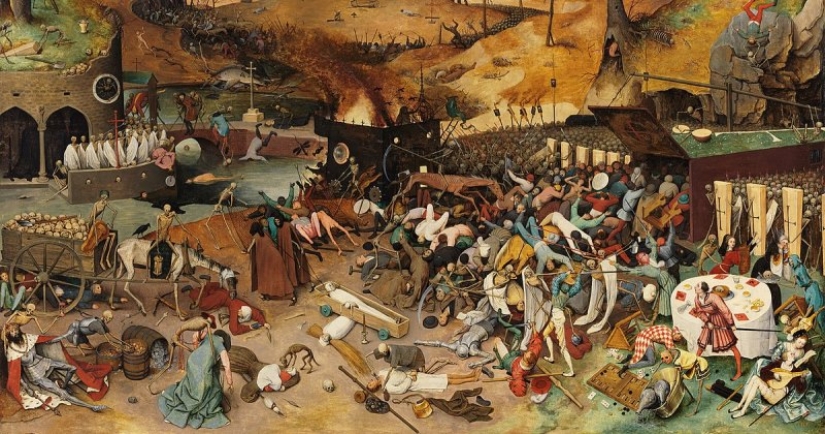
People learned how to poison weapons long before they invented the wheel. The ancient Greeks and Romans knew dozens of poisonous compounds of plant, animal and mineral origin, many of which were excellent for processing piercing and cutting tools. Homer in his "Odyssey" wrote:
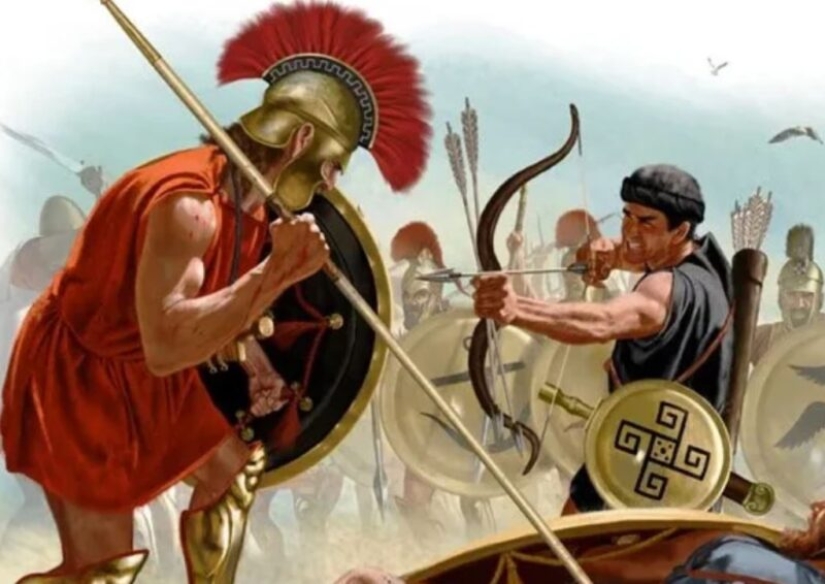
The easiest way to poison arrows or darts was to treat their tips with the juice of a plant called Aconite klobuchkovy (Aconitus napellus). It is spread all over the world and looks harmless enough, but it contains juice with the deadly alkaloid aconitine.
Melee weapons were poisoned much less often because of the danger of injuring themselves or their comrades in battle. Swords poisoned with snake venom were used in battle against the army of Alexander the Great in 326 BC by the inhabitants of the city of Garmatelia, located on the territory of modern Pakistan.
A small and not too skillful army of citizens inflicted serious damage to the Greek troops, because even a small scratch inflicted by a sword or knife of a Harmatelian killed the enemy or permanently disabled him.
Centuries ago, people did not know how to isolate pathogenic bacteria and stuff ammunition with them, but they knew well that a plague corpse poses a deadly threat to thousands of people. In 1346, the Mongol-Tatar army besieged the Genoese fortress of Kafu (now Feodosia), but did not achieve much success during the months of standing at the walls of the stronghold.
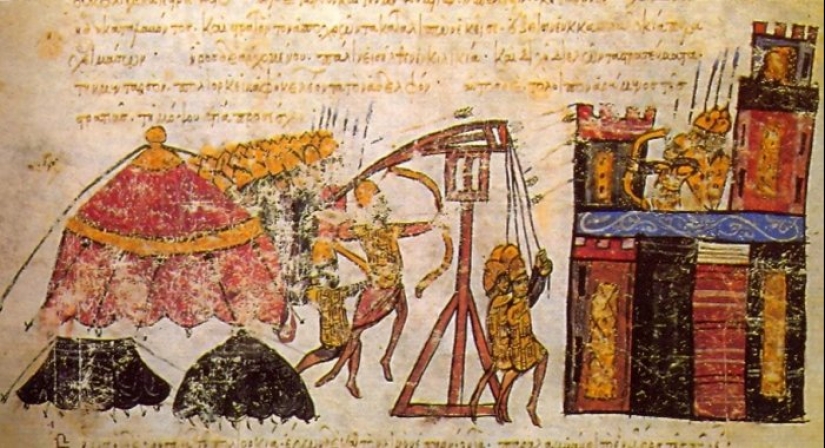
At the same time, an epidemic of bubonic plague began in the besiegers' camp, which mowed down the khan's soldiers by the hundreds. Wanting to speed up the surrender of Kafa, the Mongols threw several plague corpses with catapults into the city and soon people began to die there too.
Very soon the Genoese sent parliamentarians and offered to surrender the city if they were released alive. The invaders agreed and a small fleet from Kafa set off for his native Italy, infecting the cities where he stayed on his way. Thus began the most famous epidemic of the Black Death in the history of mankind, which devastated Europe.
Historians can't say exactly when people first guessed to set fire to an arrow to increase damage, but it happened a long time ago. The first burning arrows were wrapped with straw or tow, but this was not very effective, because the fire often died out during the flight.
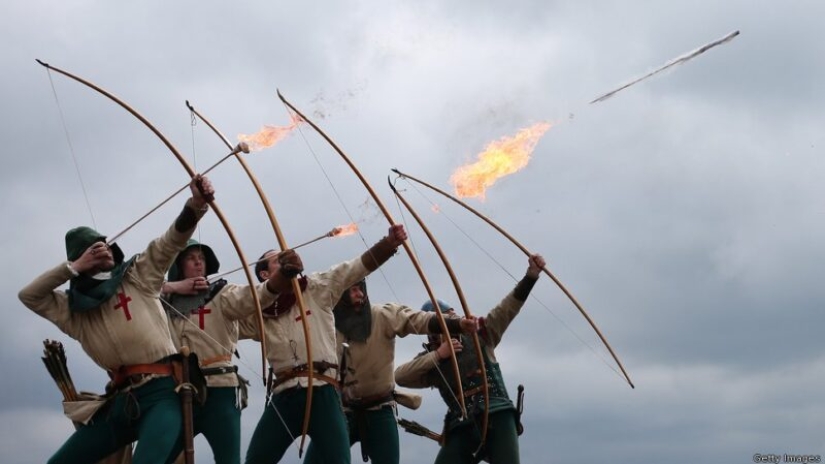
In the surviving European manuscripts of the 9th century, there are detailed instructions for making effective fire arrows. To get a throwing weapon capable of transferring fire to a distance and setting fire to an enemy's building or clothing, it was possible by dipping it in wood resin or oil.
Burning arrows were dangerous, but they were nothing compared to the so-called "Greek fire". This composition of mineral components, which still remains a mystery, was used to set fire to warships and fortresses even before our era.
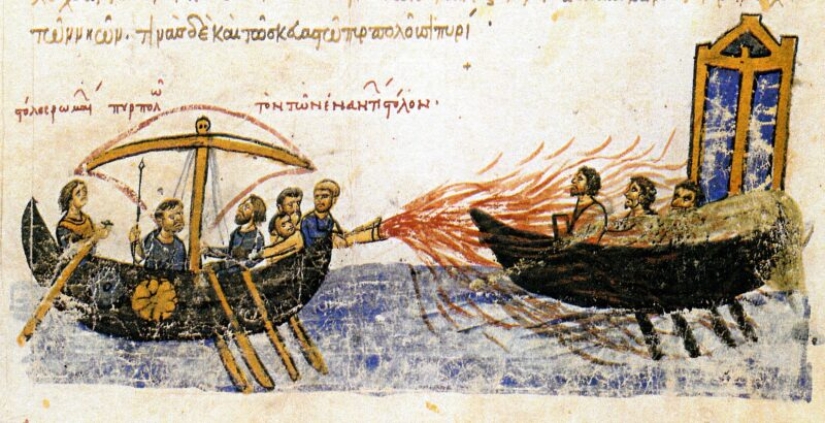
This substance was quite versatile — it could be put in a pot and thrown with a catapult, placed in a clay or copper hand grenade or poured into a tank connected to a copper pipe and used as a real flamethrower.
The Byzantines were special masters in the use of "Greek fire". With his help, they easily defeated the Arab fleet attacking Constantinople in the 8th century, and in the 10th burned to the ground the Varangian flotilla headed by Prince Igor Rurikovich himself. There was no escape from the terrible weapons of the ancients, since such a fire could not be extinguished even with water.
Before the advent of gunpowder, the ability to cook and use "Greek fire" often became decisive in battles. This was the case until the 16th century, in which the recipe for a terrible thermal weapon was lost.

They say that in 1758, the Frenchman Dupree was able to create something similar and, under King Louis XV, burned a target ship with fire at a distance. The French monarch was so impressed by the man-made fire element that he bought all his papers from the author for a lot of money and destroyed them with his own hand.
One of the first shells with biologically dangerous stuffing were the nests of wild bees and hornets. By catapulting several similar "gifts" into the besieged city, the attackers could sow panic in the ranks of its defenders.
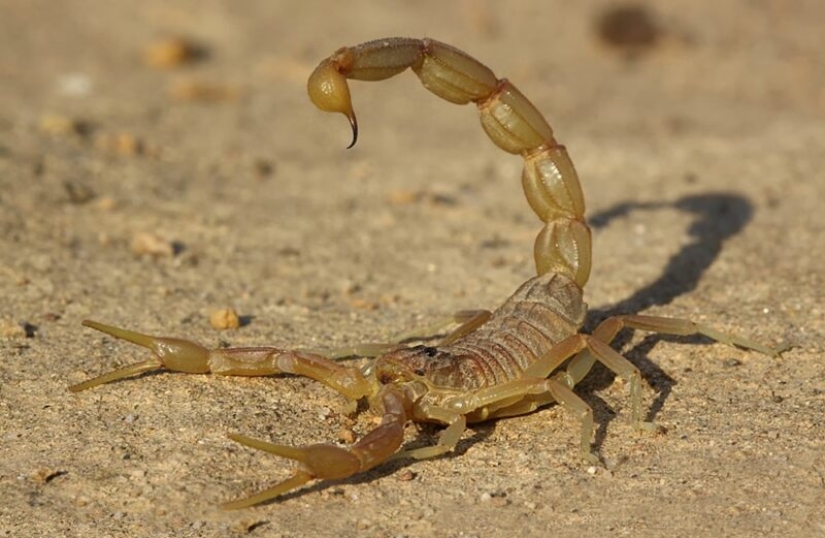
In desert areas, where bees and wasps were all bad, scorpions were often used. The chronicles say that this is how the inhabitants of Mesopotamia attacked the Romans who were trying to seize their kingdom. In the city of Hatra, they filled pots with poisonous arthropods and threw them over the wall into the enemy camp.
Roman sources wrote that there were so many scorpions that they were literally under every stone. Many soldiers died from bites, and those who survived were incapacitated for at least three days, suffering from seizures, high fever and swelling. Where the inhabitants of Hatra took so many poisonous creatures in the besieged city, the authors do not say.
Poisoning of wells, streams and food is used even today by terrorist organizations to inflict damage and demoralize the enemy. In ancient times, it was one of the most popular ways of conducting a hidden war.

The first documented case of poisoning of drinking water in history was the sabotage of the Greeks during the siege of the city of Cyrrhus in 585 BC. Clever Greeks placed crushed roots of the hellebore plant in the conduit that supplied the city. After that, the defenders of the citadel were attacked by terrible diarrhea and they surrendered.
In the 5th century BC, the Greek army entered the territory of Colchis, located on the territory of modern Georgia. In one of the settlements, the residents were so kind that they generously treated the Hoplites with selected honey. Everyone who tasted the delicacy became seriously ill after a couple of hours — bees were collecting nectar on the flowers of a poisonous rhododendron.
Chemical and biological weapons were actively used not only in the Old, but also in The New World. The Indians were great connoisseurs of plant and animal poisons, but they also used non-lethal "weapons of mass destruction".
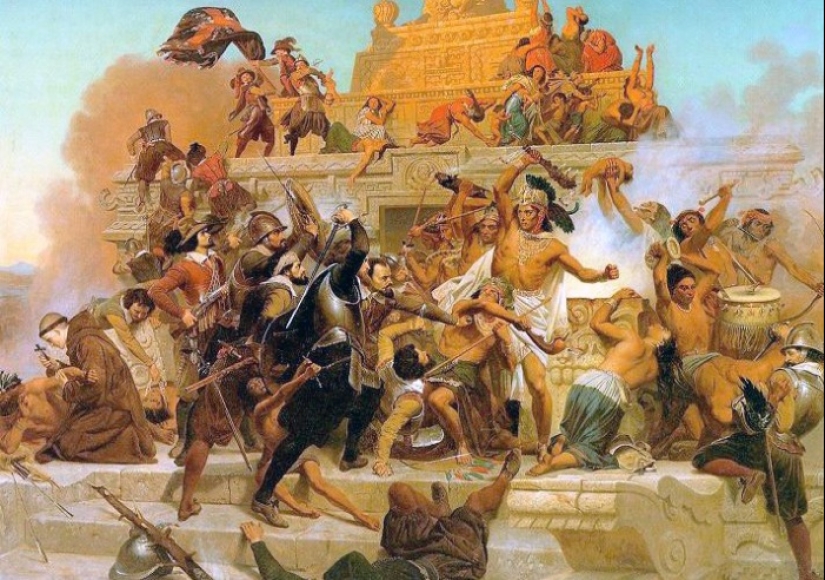
Spanish sources tell how during one of the conquistadors' battles with the Indians, they put forward not archers, but warriors with large frying pans. Embers smoldered on them, which were liberally sprinkled with a certain powder. As soon as the wind blew towards the Spaniards, they found themselves in a cloud of acrid, tearing eyes and lungs of smoke.
It turned out that the Indians threw capsicum pepper, crushed into powder, into the fire, getting a real tear pepper gas. Needless to say, in that battle, the treacherous Redskins defeated the invaders, who were not at all ready for a chemical attack.
Recent articles

Markus Reugels is an incredibly talented German photographer who specializes in high-speed and macro photography. His photographs ...

Learn unusual and interesting facts about our planet and the creatures that inhabit it! -- >Ants, when dying, emit special ...

The Japanese craftswoman has honed her skills in working with wool so much that now her crafts - felted animal figurines - look as ...